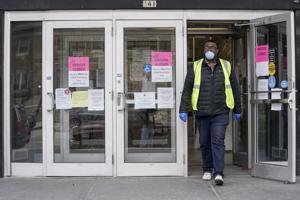Report: Extended federal unemployment benefits slowed Wisconsin’s return to work

(The Center Square) – A new report reiterates what many business groups in Wisconsin have been saying for months. Specifically: Extra unemployment benefits from Washington, D.C. kept some Wisconsin workers at home.
The Badger Institute released its report Wednesday.
The report concludes states that ended their enhanced unemployment benefits before July saw their unemployment rates fall faster than states, like Wisconsin, which kept the benefits flowing until September.
“It’s likely that a reduced federal benefit served as a disincentive for millions of workers who could still make as much or more by not returning to work,” authors Ike Brannon and Samuel Wolf conclude. “It was difficult to accurately assess the impact, however, because the diminution of benefits occurred before labor market demand began to increase.”
For example, the Badger Institute data showed “that in the three months before the July 1 cutoff, the states that were to continue to provide supplemental benefits saw their unemployment rate fall by 0.26%, while the states that would soon end the benefits saw theirs fall by an average of 0.07%.”
Those numbers changed, however, as more people went back to work in the fall.
Brannon and Wolfe explained that states which moved to end the enhanced benefits earlier saw a small statistical difference in their unemployment rates by September.
“Overall, in the 22 states that did eliminate the supplemental benefits earlier, the unemployment rate fell by 0.33% over the next three months, compared to a 0.22% drop for the states that continued providing the supplement,” the report states. “The differences are modest but statistically significant.”
Wisconsin kept offering enhanced unemployment benefits until September, and the report notes the state’s unemployment rate did not change for months.
“In Wisconsin, which maintained the federal bonus until it expired on Sept. 6, the unemployment rate has remained virtually unchanged for the past six months at 3.9% even as the national unemployment rate fell an entire percentage point, from 6% to 5%,” the authors wrote.
The Badger Institute said the research conducted for the study is ongoing.
“In early 2022, armed with three more months of data covering this period, we hope to gain more insights into the extent to which higher benefits may have deterred the unemployed from obtaining a job,” the authors wrote.
Disclaimer: This content is distributed by The Center Square
